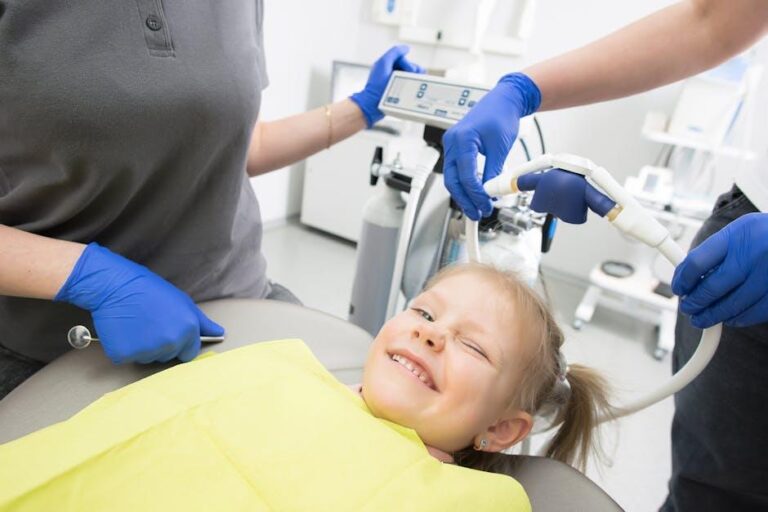
1 in 3 Kids Has Dental Problems, Poll Finds – U.S. News & World Report
Introduction: Understanding the Growing Concern of Childhood Dental Issues
Dental health is an essential part of overall well-being, especially in children. However, a recent poll highlighted by U.S. News & World Report has revealed a concerning statistic — 1 in 3 kids in the U.S. currently suffers from dental problems. This alarming figure underscores a pressing public health concern that deserves immediate attention from parents, educators, and healthcare providers alike.
In this comprehensive article, we’ll explore the most common dental issues affecting children, delve into the causes behind these problems, and offer practical tips for prevention and treatment. Whether you’re a parent seeking guidance or a health advocate interested in childhood wellness, this article is your guide to ensuring children grow up with healthy, happy smiles.
What Are the Most Common Dental Problems Among Kids?
Dental issues in children can range from mild to severe. Here are the most frequently reported problems among kids according to pediatric dental experts:
- Tooth Decay (Cavities): The most common chronic disease in childhood, cavities occur due to acid-producing bacteria acting on sugars and starches.
- Gum Disease (Gingivitis): Early signs of gum infection caused by plaque buildup, leading to redness, swelling, and bleeding gums.
- Tooth Sensitivity: Common in kids who consume excessive sugary or acidic foods, causing discomfort during eating or drinking.
- Malocclusion: Misalignment of teeth or bite issues often requiring orthodontic intervention later in childhood or adolescence.
- Traumatic Injuries: Accidents during play or sports can result in chipped, fractured, or knocked-out teeth.
Why Are Dental Problems So Common in Children?
Understanding the root causes behind these problems can help parents take better preventive measures. Key drivers include:
- Poor Oral Hygiene: Inadequate brushing and flossing habits allow plaque buildup and cavity formation.
- Diet High in Sugars and Processed Foods: Excess sugar feeds cavity-causing bacteria and weakens enamel.
- Lack of Regular Dental Visits: Many families delay or skip pediatric dental checkups, missing early signs of decay.
- Limited Oral Health Education: Both children and caregivers may underestimate the importance of dental care routines.
- Socioeconomic Barriers: Access to affordable dental care is a challenge for many communities, contributing to disparities.
The Impact of Childhood Dental Problems
Dental issues in children are not just about a painful tooth—there are broader consequences that affect a child’s daily life and future health:
- Pain and Discomfort: Untreated cavities can cause severe toothache, impacting eating and sleeping habits.
- Speech Development Issues: Dental problems can delay or impair speech clarity.
- Difficulty Eating: Pain may restrict the child’s ability to chew properly, leading to nutritional problems.
- Absenteeism: Kids with dental pain miss more school days which affects academic performance.
- Lowered Self-Esteem: Visible tooth decay or missing teeth can make kids self-conscious, influencing social interactions.
Practical Tips for Preventing Dental Problems in Kids
Prevention is always better than cure. Follow these expert-backed strategies for helping your child maintain optimal dental health:
- Start Early Oral Hygiene: Begin cleaning baby teeth as soon as they appear using a soft-bristled toothbrush.
- Encourage Brushing Twice Daily: Kids should brush with fluoride toothpaste at least twice per day, especially before bedtime.
- Floss Regularly: Teach children to floss daily once teeth start to touch to prevent gum disease and cavities between teeth.
- Limit Sugary Snacks and Drinks: Replace candies, sodas, and juices with healthier options like fruits and water.
- Schedule Regular Dental Checkups: Visit the dentist every six months for professional cleanings and early detection of issues.
- Use Dental Sealants: Ask your dentist about sealants, a protective coating applied on molars to prevent decay.
- Protect Teeth During Sports: Ensure kids wear mouthguards during contact sports to avoid trauma.
Case Study: Successful Intervention in a Community Program
In an initiative launched in 2023, a school district in Ohio implemented a dental health program targeting underserved kids aged 5-12. The program’s key components included free dental checkups, oral health education workshops, and distribution of free dental hygiene kits.
Results after one year:
| Metric | Before Program | After Program |
|---|---|---|
| Percentage of Kids with Dental Problems | 35% | 21% |
| Dental Checkup Attendance | 40% | 85% |
| Reported Dental Pain | 28% | 10% |
This case study demonstrates how focused efforts and education can decrease dental problems significantly and improve children’s oral health outcomes.
First-Hand Experience: A Parent’s Journey to Improving Their Child’s Dental Health
Jennifer, mother of 7-year-old Ethan, shared her story: “Ethan used to dread brushing and had multiple cavities by age six. After consulting with our dentist, we changed his diet, made brushing a fun activity with music, and visited the dentist every four months. Now, Ethan’s cavity-free and even proud to show his bright smile!”
Stories like Jennifer and Ethan’s provide real-world evidence that with commitment and proper care, dental problems can be managed and prevented.
Summary Table: Common Dental Problems & Preventive Measures for Kids
| Dental Problem | Cause | Practical Prevention Tips |
|---|---|---|
| Tooth Decay | Poor oral hygiene & sugary diet | Brush twice, floss daily, limit sugar |
| Gingivitis | Plaque buildup, poor flossing | Proper brushing & flossing, dental checkups |
| Malocclusion | Genetics & thumb sucking | Early orthodontic consultation |
| Tooth Sensitivity | Enamel erosion | Avoid acidic foods, dental fluoride treatments |
| Dental Trauma | Sports injuries or accidents | Use mouthguards, supervise play |
Conclusion: Prioritizing Children’s Dental Health for a Brighter Future
The finding that 1 in 3 kids has dental problems should serve as an urgent wake-up call for families, schools, and health professionals across the United States. Childhood dental health is foundational—not only for preventing pain and suffering but for supporting overall growth, development, and self-esteem.
Through early intervention, consistent oral hygiene routines, healthy dietary habits, and access to regular dental care, it is possible to reduce the prevalence of childhood dental issues. Remember, preventing dental problems today means a lifetime of confident smiles tomorrow.
If you’re a parent or caregiver, start implementing these tips today and encourage your community to do the same. A healthier smile is one of the greatest gifts a child can have.


